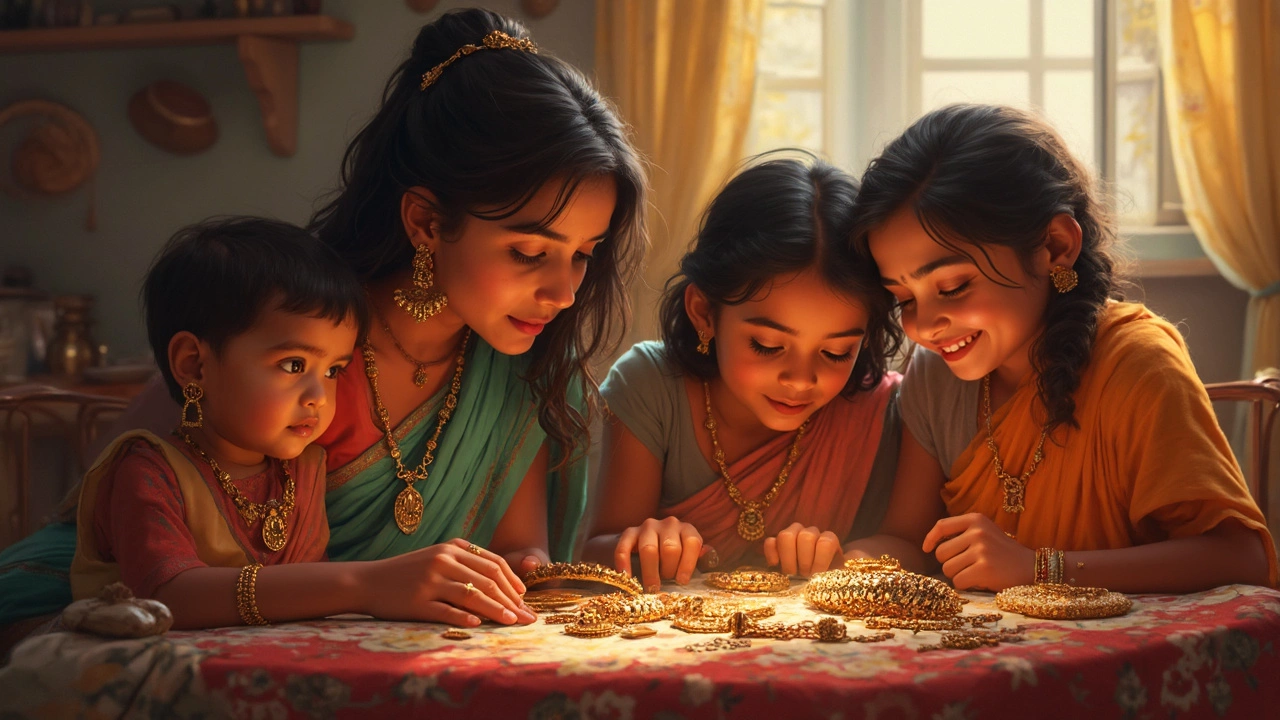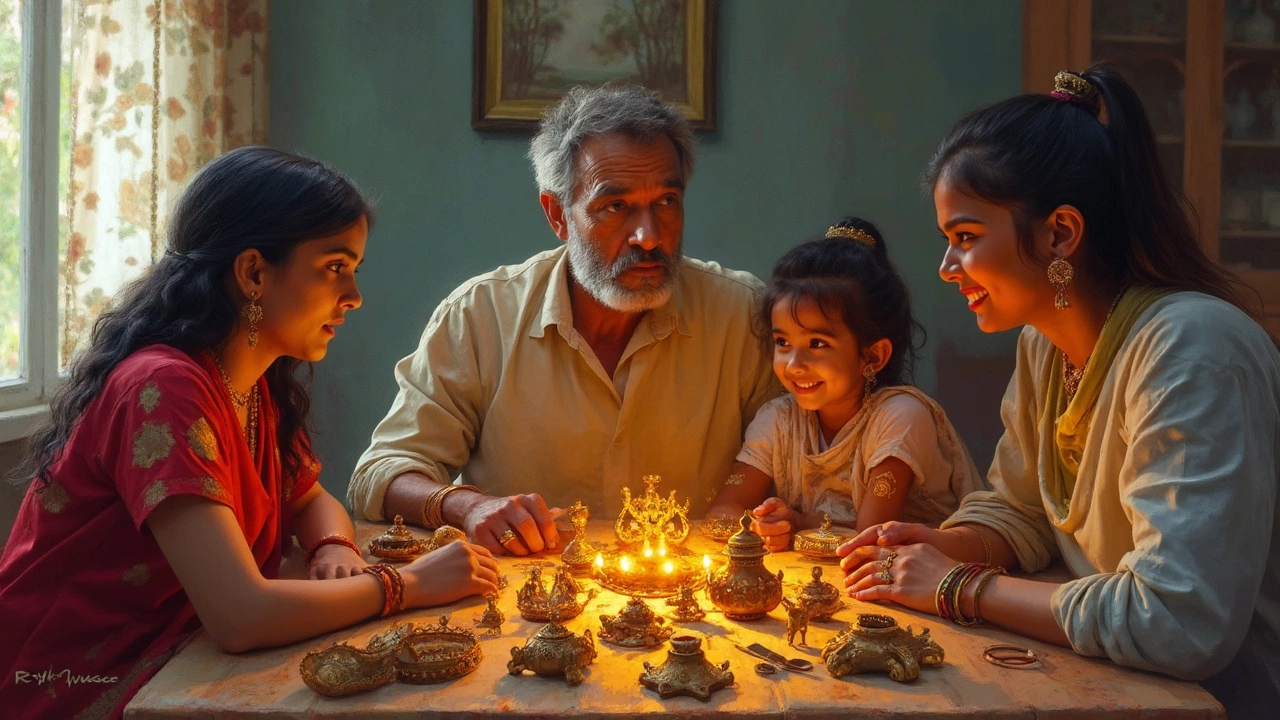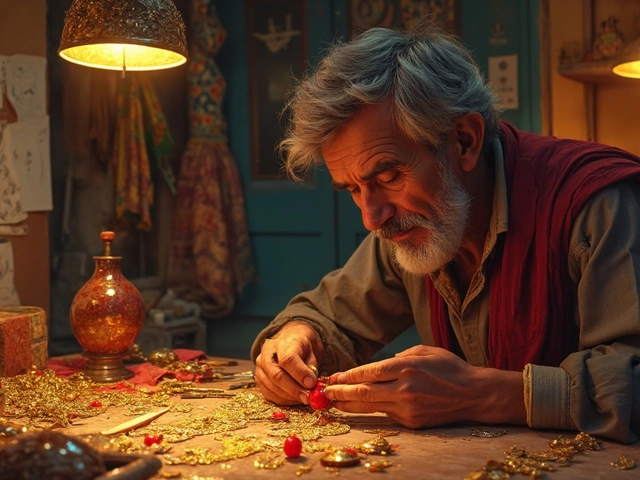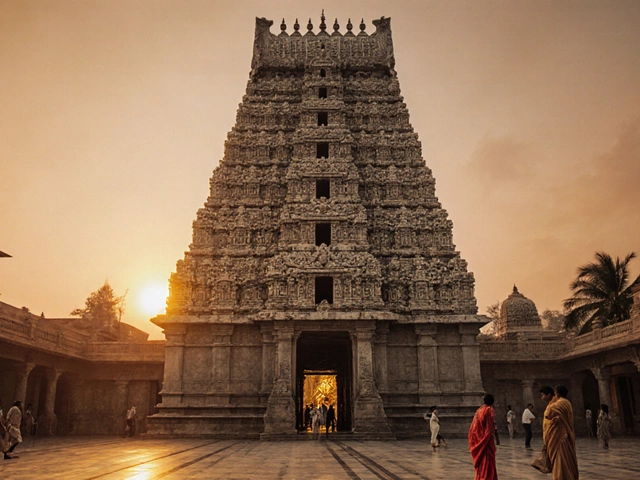
When you're looking at a box full of your late parents' jewelry, it's not just about the gold or gems. It's a mixed bag of emotions, memories, and historical value. We've all been there, feeling torn between guilt and practicality. So, what do you really do with these sparkling remnants of the past?
First off, it's essential to acknowledge the emotions tied to these pieces. Each ring, necklace, or bracelet could be a snippet of family history. Even if you don't fancy wearing them daily, it might be worth holding onto something simple, like a pendant that pairs well with modern outfits. It doesn't just keep memories close, but can be a stylish piece too!
But let's not ignore the practical side. Some jewelry could be worth more than its weight in gold - literally! Getting an appraisal provides a clearer picture. You might think Aunt Candice's brooch is just a nice keepsake, but it could be a collector's dream.
- Understanding Emotional Value
- Evaluating Financial Worth
- Repurposing Jewelry
- Selling Antique Pieces
- Passing Down Heirlooms
Understanding Emotional Value
Dealing with deceased parents' jewelry can be emotionally tricky. These items aren't just metal and stones; they’re pieces of your family’s past. That ring your mom wore every day or your dad’s cufflinks from their wedding day can stir up a lot of memories. These pieces might spark joy, sadness, or a mix of emotions, making it challenging to decide what to do with them.
Recognizing the emotional significance is key because, more often than not, the value isn't in the monetary worth but in what it represents. Maybe that necklace was a gift celebrating a significant milestone or a bracelet that's been passed down for generations. Perceiving these pieces as a living memory helps in deciding their future. It’s about carrying those family stories forward, either by preserving them as they are or creatively repurposing them to fit into today’s lifestyle.
When facing a decision, it might help to talk it over with family. Sometimes, what doesn't hold particular meaning for you might be precious to a sibling or cousin. This kind of openness can prevent family disagreements down the road. Maintaining a tradition can also be beautiful. For instance, some families create a 'story box' where each piece's history is documented and shared at family gatherings.
And hey, if wearing these items makes you feel like you're walking in their footsteps, perhaps that's the best value they offer. It's a good blend of holding on to the past while looking ahead. The emotional aspect of antique and heirloom jewelry shouldn't be underestimated. It's like having tangible parts of loved ones with you as you navigate life.
Evaluating Financial Worth
Thinking about the financial worth of your inherited jewelry can feel like diving into the deep end. But don't worry; it's not as overwhelming as it seems. First, understanding that not all that glitters is gold—sometimes it's diamonds or even platinum!—is crucial when figuring out the potential value of your deceased parents' pieces.
Getting a professional appraisal is a smart move. A reputable jeweler or appraiser can help you identify the true worth, whether it's a 19th-century brooch or a simple gold ring. These evaluations often consider the brand, metal purity, gemstone quality, and the item's history. If your parent’s jewelry includes vintage or antique items, they might be even more valuable because collectors love a good backstory!
Here's a small list of steps to ensure you’re covering all bases:
- Find a certified appraiser who specializes in estate jewelry. The American Gem Society (AGS) or National Association of Jewelry Appraisers (NAJA) are good places to start.
- Document each piece with photos and descriptions. Not only does this help in the appraisal process, but it's also useful for insurance purposes.
- Research the current market trends for antique jewelry. Is there a surge in demand for Art Deco, for example? Timing can influence how much you get if you choose to sell.
- Don't forget about insurance coverage. Once appraised, ensure these pieces are listed on your homeowners or renter’s policy.
For those who love numbers, let’s look at a typical scenario. In the table below, we’ve summarized potential increases in value due to rarity and age:
| Category | Potential Value Increase |
|---|---|
| Vintage (20-100 years old) | 20%-50% |
| Antique (over 100 years old) | 50%-100% |
Being armed with the right info ensures you're not just keeping an eye on the sentimental value but also recognizing the potential financial benefit. Whether considering selling or simply securing what you have, knowing the worth can shape your decision-making process effectively.

Repurposing Jewelry
Repurposing your antique jewelry is like giving it a whole new life. If chunky brooches and ornate rings aren't your style, there are plenty of ways to transform these vintage pieces into something you'll truly love. People often update inherited pieces to better fit modern tastes while still honoring their family legacy.
Think about turning an old pendant into a charm bracelet or combining several rings' stones into one statement piece. Jewelry designer Jane Smith says, "By repurposing, you’re wearing your heritage in a way that feels right today."
By repurposing, you’re wearing your heritage in a way that feels right today. — Jane Smith, Jewelry Designer
The process can be as simple or elaborate as you like. Here’s how you might go about it:
- Idea Generation: Sketch or brainstorm ideas with a jeweler. They’ll help you envision possibilities that you might not have thought of.
- Consult a Professional: Find a trusted jeweler who specializes in remodeling antique pieces. They can advise you on preserving the integrity and value of the piece while making changes.
- Budgeting: Remember, significant alterations could be pricey depending on craftsmanship required, but it often costs less than purchasing new pieces of similar quality.
Some families choose to share the love by splitting larger pieces into smaller ones that can be passed around. This approach is especially handy for keeping harmony among siblings! Whether it’s a necklace now serving as multiple earrings or a bracelet split into charms, there's no wrong way to keep those memories alive.
Selling Antique Pieces
Thinking about parting with some of your parents' antique jewelry? It can be a tough decision, especially if those pieces have been in the family for generations. But if you're leaning toward selling, there are some things to keep in mind to make sure you get the best bang for your buck.
First up, know what you've got. Getting an expert appraisal is a biggie. Not only will it let you know the true worth of each piece, but it'll also help in conversations with potential buyers. Make sure any appraiser you go with is reputable—this might mean checking reviews or getting recommendations from those who’ve been through the process.
Once you've got those figures, think about where you'll sell your heirloom jewelry. You have options! Local jewelry stores or antique shops often buy directly or via consignment, but they might offer you less as they need to turn a profit too. Online platforms like Etsy or eBay are great places if you're willing to put in the effort to list, photograph, and manage the sale yourself.
Here's a tip gathered from sellers: sometimes breaking up a set and selling items individually can fetch a higher total price. Sounds a bit weird, right? But often buyers might be interested in just that one perfect piece.
Another important thing? Timing. The demand for certain styles or materials of antique jewelry can fluctuate, so keeping an eye on market trends could benefit you financially. If your piece is a century old, it could fetch a premium just because it's hit a milestone year.
And of course, if selling brings mixed emotions, consider using part of the sale proceeds to create a personal memento, such as a custom piece that retains a bit of the heirloom. That way, you're not completely letting go of the sentimental side of things.

Passing Down Heirlooms
When it comes to passing down heirlooms, you’re not just handing over jewelry – you're sharing stories, family history, and a piece of identity. This is a powerful way to keep the memory of your deceased parents alive and cherished across generations.
Deciding who gets which piece can be tricky. It's crucial to have open conversations with family members. Sit down over coffee and talk about what each piece means, who might value it most, and any prior wishes expressed by your parents. A little communication goes a long way in avoiding future squabbles.
If some pieces are particularly desirable, consider drawing lots as a fair way to distribute them. Alternatively, rotate pieces among family members every few years or use jewelry as gifts for significant events like weddings or graduations. Got a cousin getting married? That vintage necklace just might be the ‘something old’ she’s looking for.
For families blessed with numerous descendants, creating a family jewelry registry might help. Document each item with photos and descriptions, noting any known history. This not only mitigates confusion about which piece is which but also preserves stories that can be retold at annual family gatherings.
Think about having a family meeting to record stories about the antique jewelry. Who wore what at whose wedding? What tales are associated with that sapphire ring? Over time, these stories could become even more valuable than the jewelry itself.
Remember, the sentimental value often outweighs the financial worth, particularly when pieces carry stories of love and resilience. These stories can bind family ties across time, making you a link in a comforting chain stretching back to your ancestors while looking forward to future generations.




